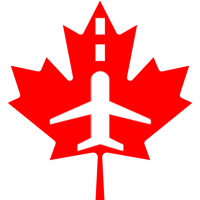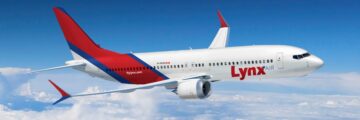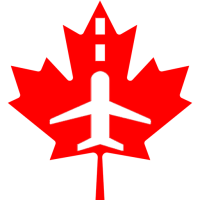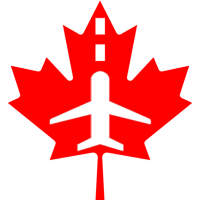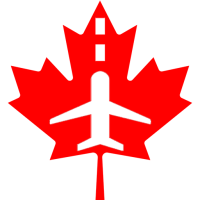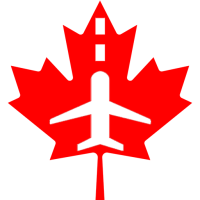
Richmond Hill, Ontario, 28 February 2023 — Today, the Transportation Safety Board of Canada (TSB) released its investigation report (A21O0127) into a runway overrun in Kingston, Ontario in 2021.
On 30 November 2021, at 17:54 EST, an Embraer EMB-505 aircraft, operated by I.M.P. Group Limited, departed Montréal/Pierre Elliott Trudeau International Airport (CYUL), Quebec, for an instrument flight rules flight to Kingston/Norman Rogers Airport (CYGK), Ontario, with two pilots on board.
Upon landing in Kingston CYGK on Runway 19, the pilots applied maximum braking. Although the braking system was working properly, the pilots did not feel the expected deceleration. The aircraft departed the runway’s end while skidding slightly to the left and came to a stop in a grassy area approximately 440 feet beyond the runway threshold. Neither pilot was injured, the aircraft was undamaged, and there was no damage to airport fixtures.
The investigation determined that the surface friction on Runway 19 at the time of the occurrence was consistent with that of an ice-covered runway. The aerodrome routine meteorological reports (METARs) issued during the hours leading up to the occurrence indicated both that snow had been falling steadily and that the temperature had dropped below freezing. Despite the snowfall, the runways still appeared bare and wet at the time of the occurrence.
The most recent runway surface condition NOTAM (Notice to Airmen) reviewed by the crew reported good braking conditions with a wet runway surface. As a result, they determined that a safe landing was possible. However, during the time between the issuance of the runway surface condition NOTAM and the occurrence landing, some of the moisture on the runway surface had frozen, resulting in an icy surface with limited friction available for braking.
While the aircraft touched down at the planned speed within the touchdown zone and the brakes were applied immediately, the decreased braking effectiveness resulted in the runway overrun.
Runway overruns are a Watchlist 2022 issue. As this occurrence demonstrates, when a runway overrun occurs during landing, it is important that the aircraft have an adequate safety area beyond the end of the runway to reduce adverse consequences.
Following the occurrence, the aircraft operator, I.M.P. Group Limited, updated its procedures to include the task of notifying the airport operator of planned arrivals when environmental conditions may be affecting the runway condition and to require pilots to request updated runway condition reports if conditions warrant.
See the investigation page for more information.
The TSB is an independent agency that investigates air, marine, pipeline, and rail transportation occurrences. Its sole aim is the advancement of transportation safety. It is not the function of the Board to assign fault or determine civil or criminal liability.
Summary
On 30 November 2021, at 1754 Eastern Standard Time, the Embraer EMB-505 (Phenom 300E) (registration C-GRIA, serial number 50500566) aircraft, operated by I.M.P. Group Limited, departed Montréal/Pierre Elliott Trudeau International Airport (CYUL), Quebec, for an instrument flight rules flight to Kingston/Norman Rogers Airport (CYGK), Ontario, with 2 pilots on board.
At 1829, the aircraft landed on Runway 19 following an instrument landing system approach. The second-in-command, who was the pilot flying, applied full braking within seconds of touchdown but did not feel the expected aircraft deceleration. The pilot-in-command also attempted to stop the aircraft once it was apparent that the expected braking was not taking place; this had no added effect on the deceleration of the aircraft. The aircraft departed the runway’s end at a speed of 61 knots, entering a grassy area. It continued for approximately 440 feet before coming to a stop.
Neither pilot was injured, the aircraft was undamaged, and there was no damage to airport fixtures.
1.0 Factual information
1.1 History of the flight
At approximately 1700Footnote1 on 30 November 2021, the 2 pilots scheduled on the occurrence flight met at a fixed-base operatorFootnote2 at Montréal/Pierre Elliott Trudeau International Airport (CYUL), Quebec, for a pre-flight briefing. The flight was to be a nightFootnote3 instrument flight rules (IFR) flight between CYUL and Kingston/Norman Rogers Airport (CYGK), Ontario, that would last approximately 35 minutes and cover a distance of 144 nautical miles (NM). The flight crew were familiar with the route, having landed on Runway 19 at CYGK before on more than one occasion. The aircraft was an Embraer EMB-505 (Phenom 300E), which was operated by I.M.P. Group Limited (I.M.P. Group) under Canadian Aviation Regulations (CARs) Subpart 604—Private Operators.
The pilot-in-command, seated in the right seat, was the pilot monitoring, while the second-in-command, seated in the left seat, was the pilot flying (PF). The flight proceeded uneventfully until the aircraft touched down on Runway 19 at CYGK following the instrument landing system approach.
At 1829, the main landing gear (MLG) of the aircraft touched down within the touchdown zone at an indicated airspeed of 113 knots approximately 1200 feet beyond the displaced threshold of Runway 19. The PF began braking within 2 seconds of touchdown, with maximum braking occurring after approximately 8 seconds. The aircraft did not decelerate appreciably during these 8 seconds, and the crew did not feel pulsing or shuddering through the braking system, which is typically felt when the anti-skid engages. After a brief verbal exchange between the pilots about the insufficient deceleration, the pilot monitoring also applied his brakes, with no added effect. Following 24 seconds of full brake application, during which braking performance did not improve, and with approximately 200 feet of runway remaining, the PF pulled the emergency parking brake in an effort to increase the braking effectiveness. The emergency parking brake application did not alter or improve the deceleration of the aircraft.
The aircraft overran the runway while skidding slightly to the left, with the nose to the right of the aircraft track. The overrun began approximately 45 feet left of the centreline at a speed of 61 knots. The aircraft continued to slide onto the soft grassy area beyond the runway’s end for approximately 400 feet before coming to a stop 30 feet left of the runway extended centreline and 48 feet short of the approach lighting structure for Runway 01 (Figure 1), remaining within the runway-end safety area (RESA) throughout the overrun.

1.2 Injuries to persons
There were no injuries.
1.3 Damage to aircraft
There was no damage to the aircraft resulting from the runway overrun.
- SEO Powered Content & PR Distribution. Get Amplified Today.
- Platoblockchain. Web3 Metaverse Intelligence. Knowledge Amplified. Access Here.
- Source: https://canadianaviationnews.wordpress.com/2023/03/01/temperature-drop-caused-a-wet-runway-surface-to-freeze-resulting-in-a-runway-overrun-in-kingston-ontario/
- 1
- 2021
- 2022
- 2023
- 28
- a
- About
- added
- advancement
- adverse
- affecting
- After
- agency
- AIR
- aircraft
- airport
- Although
- and
- apparent
- appeared
- Application
- applied
- approach
- approximately
- AREA
- attempted
- available
- aviation
- before
- began
- below
- between
- Beyond
- board
- Briefing
- Canada
- cars
- caused
- coming
- condition
- conditions
- Consequences
- consistent
- continued
- cover
- Criminal
- demonstrates
- Despite
- Determine
- determined
- DID
- displaced
- distance
- down
- Drop
- dropped
- during
- eastern
- effect
- effectiveness
- effort
- Elliott
- emergency
- environmental
- exchange
- expected
- Factual
- Falling
- familiar
- February
- Feet
- Files
- flight
- flying
- following
- Freeze
- Freezing
- friction
- from
- frozen
- full
- function
- Gear
- good
- Group
- having
- history
- HOURS
- However
- HTML
- HTTPS
- IFR
- immediately
- important
- improve
- in
- include
- Increase
- independent
- indicated
- information
- instrument
- International
- investigates
- investigation
- issuance
- issue
- Issued
- IT
- landing
- Last
- leading
- Lighting
- Limited
- Main
- Marine
- max-width
- maximum
- minutes
- monitoring
- more
- morning
- most
- Neither
- nose
- notifying
- November
- November 2021
- number
- occasion
- ONE
- Ontario
- operated
- operator
- parking
- performance
- pilot
- Pilots
- pipeline
- Place
- planned
- plato
- Plato Data Intelligence
- PlatoData
- possible
- procedures
- properly
- Quebec
- Rail
- recent
- reduce
- Registration
- released
- remaining
- report
- Reported
- Reports
- request
- require
- result
- resulting
- reviewed
- Rogers
- Route
- rules
- runway
- safe
- Safety
- scheduled
- seconds
- serial
- Short
- Slide
- snow
- Soft
- some
- Source
- speed
- standard
- Still
- Stop
- structure
- Surface
- system
- taking
- Task
- The
- threshold
- Through
- throughout
- time
- to
- today
- touched
- track
- transportation
- Trudeau
- TSB
- typically
- updated
- Warrant
- which
- while
- WHO
- within
- WordPress
- working
- would
- zephyrnet


